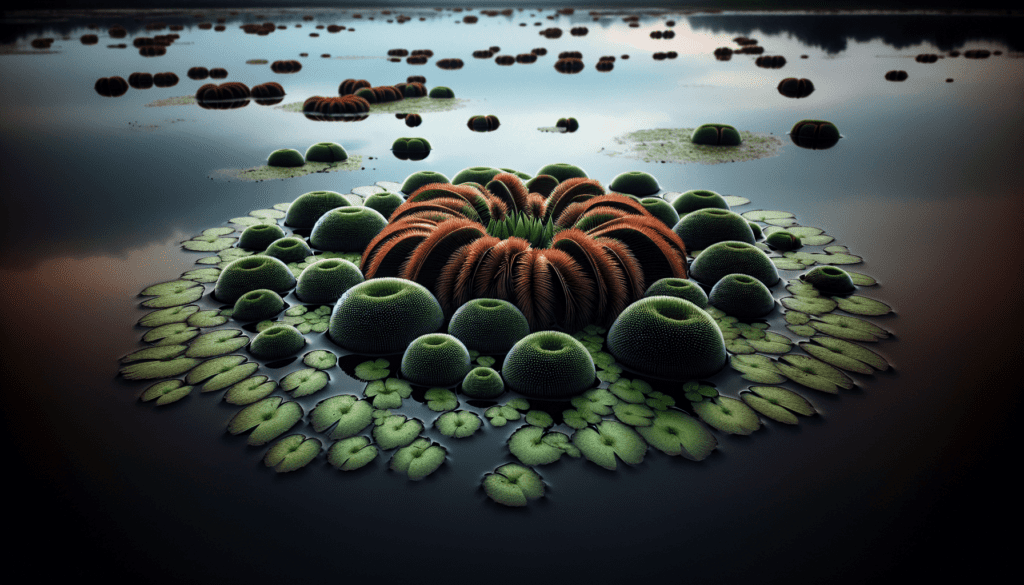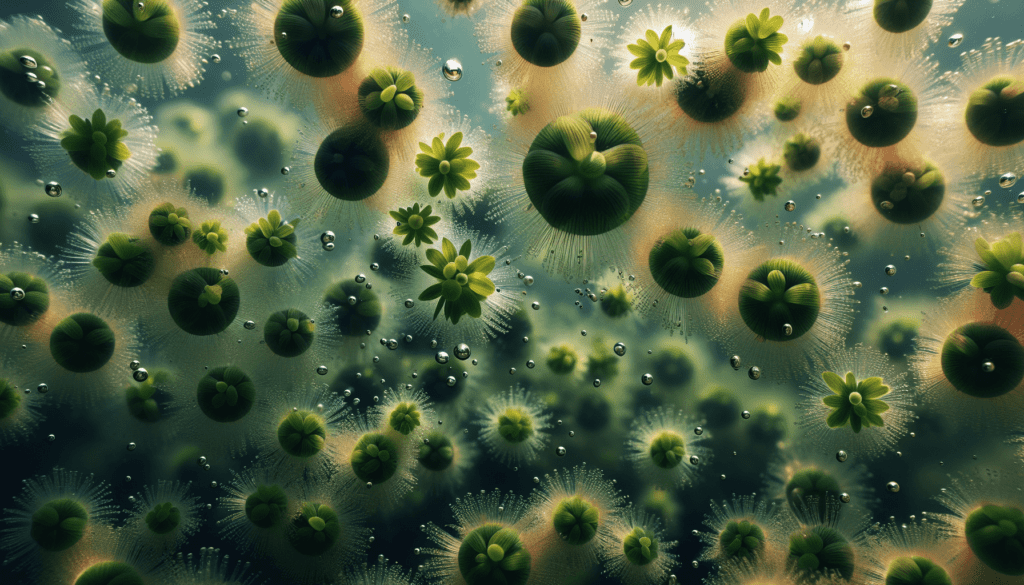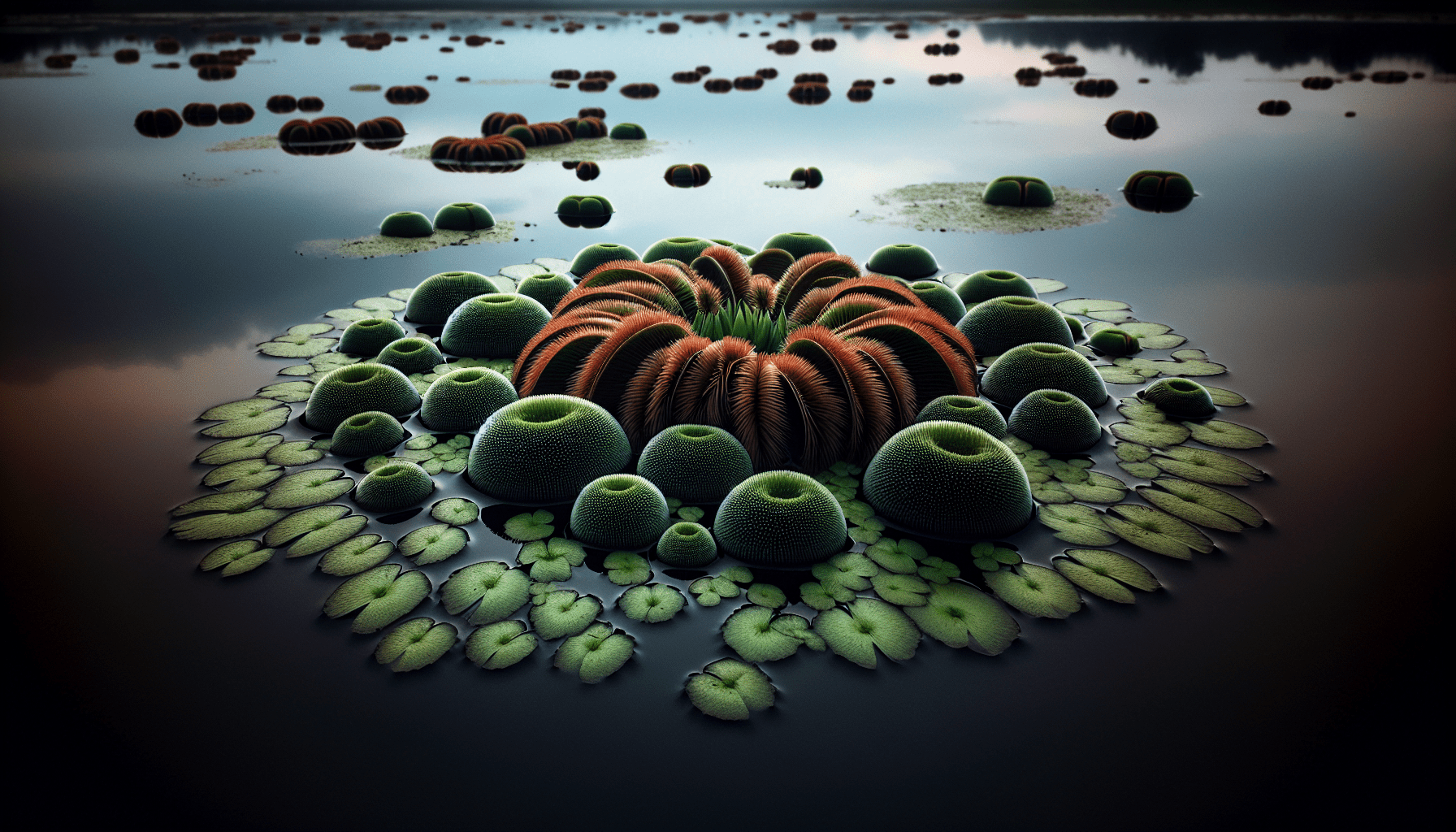As you explore the science of hydrobiology and aquatic botany, you may find yourself intrigued by the ecological significance of the aquatic weed Wolffia Arrhiza. Known for its minute size and rapid growth, this unique plant is one of the smallest and fastest growing angiosperms on the planet. This article highlights the fascinating characteristics of Wolffia Arrhiza, guiding you to comprehend its ecological importance, its role in the global food chain, its potential benefits in environmental remediation, and its emerging significance in molecular biology as a subject of scientific research.

Overview of Wolffia Arrhiza
Definition and basic characteristics
Wolffia Arrhiza is a unique aquatic plant species that falls under the family Araceae and the genus Wolffia, the smallest flowering plants in the world. This tiny free-floating perennial, sometimes referred to as a weed due to its rapid growth and extensive coverage in water bodies, has oblong-ovate fronds devoid of leaves, stems, and roots.
Classification within the plant kingdom
In the vast plant kingdom, Wolffia Arrhiza is classified in the order Alismatales, family Araceae, subfamily Lemnoideae, genus Wolffia, and species Arrhiza. This classification details its close relation to duckweeds, while highlighting its unique features and adaptations within a distinct genus.
Common names and distribution
Commonly known as rootless duckweed or spotless watermeal, Wolffia Arrhiza remains widespread in surface waters across various regions globally. Its geographic coverage includes Europe, northern Africa, parts of Asia, and sporadically in North and South America.
Physical Description and Growth Habit
Size and shape
One of the defining characteristics of Wolffia Arrhiza is its minuscule size, often measuring less than a millimeter across. The minute, free-floating thalli (the plant body) are oval to oblong in shape and flat on one side.
Color and texture
The overall coloration of Wolffia Arrhiza spans shades of shiny green, sometimes appearing almost translucent under direct sunlight. The plant’s texture is typically soft and smooth to the touch.
Pattern of growth and seasonal variations
The growth of Wolffia Arrhiza generally occurs in a vegetative cloning manner, with new fronds appearing from the basal part of older ones, creating a clonal colony. Such rapid and extensive growth allows for significant seasonal variations, with plant colonies sometimes forming dense mats on the water surface in warm, sunny periods.
Ecological Role and Environmental Impact
Contribution to biodiversity
Despite their tiny size, plants like Wolffia Arrhiza foster considerable biodiversity by offering food and habitat for various micro and macro-invertebrates. They also act as ‘nurseries’ for juvenile fish who find refuge among their dense colonies.
Interactions with other marine species
The interaction between Wolffia Arrhiza and other aquatic species often sees the plant serving as food for birds, rodents, and fish, while also providing a substrate for algae and other micro-organisms, consequently outlining a significant ecological role.
Impact on water quality and ecosystem health
While their rapid growth can hinder sunlight penetration into water bodies and alter water chemistry, resulting in potential negative impact on other aquatic organisms, Wolffia Arrhiza’s dense colonies can aid in purifying water bodies by absorbing excess nutrients, thereby reducing eutrophic conditions.

Life Cycle and Reproduction
Reproductive methods and strategies
Wolffia Arrhiza primarily reproduced vegetatively where daughter fronds develop within the mother frond’s cavity, emerge to float freely nearby. This method of asexual reproduction allows for the rapid spread and colonisation of suitable habitats.
Lifecycle stages and duration
The life cycle of Wolffia Arrhiza is relatively short. Within the span of several days, fronds are produced, mature, and start to produce clones of themselves. Their life cycle enables them to adapt to their environment and survive in different conditions.
Differences between male and female plants
Typically, Wolffia Arrhiza does not differentiate into distinct male and female plants. However, under specific conditions, it can produce flowers with both male and female components within a single plant. This exemplifies their adaptability and underlines a rare botanical phenomenon called monoecy.
Diet and Feeding Preferences
Photosynthetic requirements
Given its autotrophic nature, Wolffia Arrhiza largely relies on photosynthesis as its primary mode of nutrition, deriving energy from sunlight, while utilising nutrients from its surrounding aquatic environment.
Nutrition sourcing and absorption
Wolffia Arrhiza absorbs nutrients directly from the water through its surfaces, helping to filter out excess nutrients which otherwise could lead to eutrophication.
Adaptations for survival in aquatic environments
The absence of roots in Wolffia Arrhiza represents an evolutionary adaptation for survival in nutrient-rich aquatic environments, allowing the plant to float while reducing resource allocation to unnecessary structures.
Distribution and Habitat Preferences
Geographical spread and distribution
Wolffia Arrhiza exhibits a cosmopolitan distribution, found in water bodies across various climatic regions from the temperate to the tropical.
Preferred water conditions
The plant thrives in stagnant or slow-moving fresh water bodies with abundant direct sunlight. They are often found in nutrient-rich lakes, ponds, and marshes.
Changes in habitat over life cycle
Throughout its lifespan, the floating Wolffia Arrhiza remains on the water surface, exploiting the nutrient availability as well as unimpeded sunlight for its photosynthetic requirements.
Threats and Conservation
Current threats and impact on population
The main threats to Wolffia Arrhiza populations come from habitat destruction, water pollution, and competition from invasive species of plants, which can suppress or displace them.
Conservation efforts and status
Efforts to conserve and protect Wolffia Arrhiza, like other aquatic micro-flora, are generally minimal. Aimed at maintaining overall aquatic biodiversity, these efforts potentially include measures to improve water quality and manage invasive species.
Role of human activity in raising or reducing threats
Human activities which degrade water quality or physically alter water bodies pose a significant threat. Conversely, human conservation interventions can help protect, conserve, and replenish Wolffia Arrhiza populations.
Wolffia Arrhiza as an Invasive Species
Introduction and spread in non-native areas
In certain circumstances, Wolffia Arrhiza, due to its fast growth and high reproduction rate, can be introduced in non-native waters where it out-competes native aquatic species for resources.
Impact on local ecosystems
In these non-native ecosystems, Wolffia Arrhiza can form dense mats, impeding sunlight penetration and altering the water’s chemical composition, often to the detriment of the local aquatic flora and fauna.
Methods of control and prevention
Potential control methods for Wolffia Arrhiza infestations include the use of herbicides, introduction of specific herbivores, and physical removal. Prevention could involve strict controls on the intentional or accidental introduction of Wolffia Arrhiza into non-native bodies of water.
Economic Value and Uses
Uses in aquaculture and agriculture
The high protein content of Wolffia Arrhiza renders it a potential supplement in livestock feed and aquaculture. Furthermore, it has been employed in agriculture for its potential to bio-remediate nutrient-rich waters.
Potential as a biofuel source
The high reproduction rate and photosynthetic efficiency of Wolffia Arrhiza suggest potential value as a biofuel source. Its ability to absorb excess nutrients and CO2 also implies potential to offset some renewable energy challenges.
Uses in traditional medicine and nutrition
Historically, various cultures have employed Wolffia Arrhiza as a food source due to its rich nutritional profile. Furthermore, it also has seen use in traditional medicine practices.
Current Research and Future Directions
Emerging areas of research
Recent research into Wolffia Arrhiza focuses on exploiting its capability to produce biomass rapidly, its potential as a source of micro-nutrients and bioactive compounds, and its role as a bio-remediating agent.
Potential impacts of climate change
Future studies may explore how changes in temperature and precipitation patterns, as a result of climate change, affect the growth and distribution of Wolffia Arrhiza.
Use in bioengineering and genetic research
Wolffia Arrhiza also appears promising as a model organism in bio-engineering and genetic research due to its simplicity and high reproduction rate. It may provide crucial insights into plant biology, aquatic ecological interactions, and climate change impacts.
